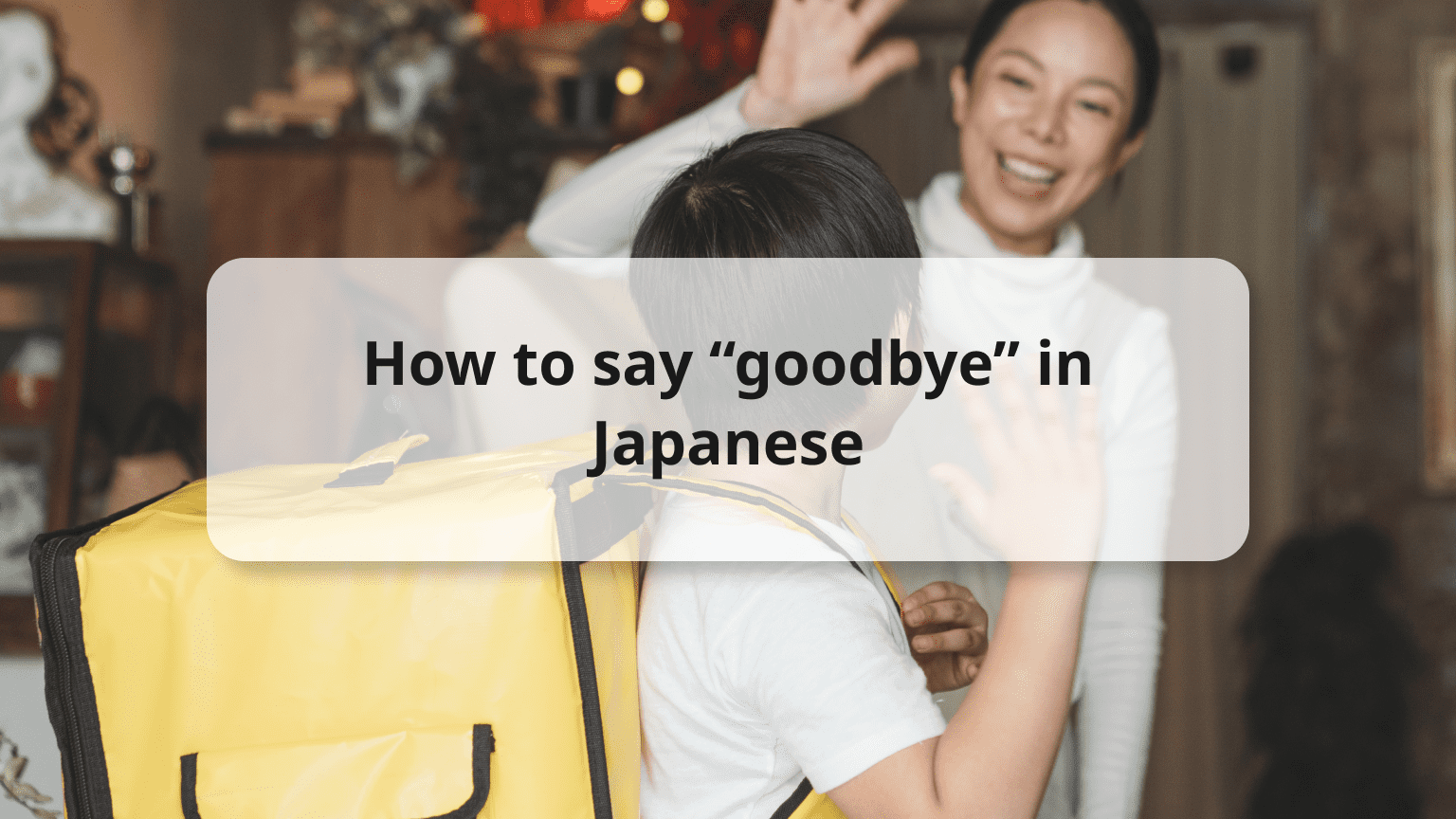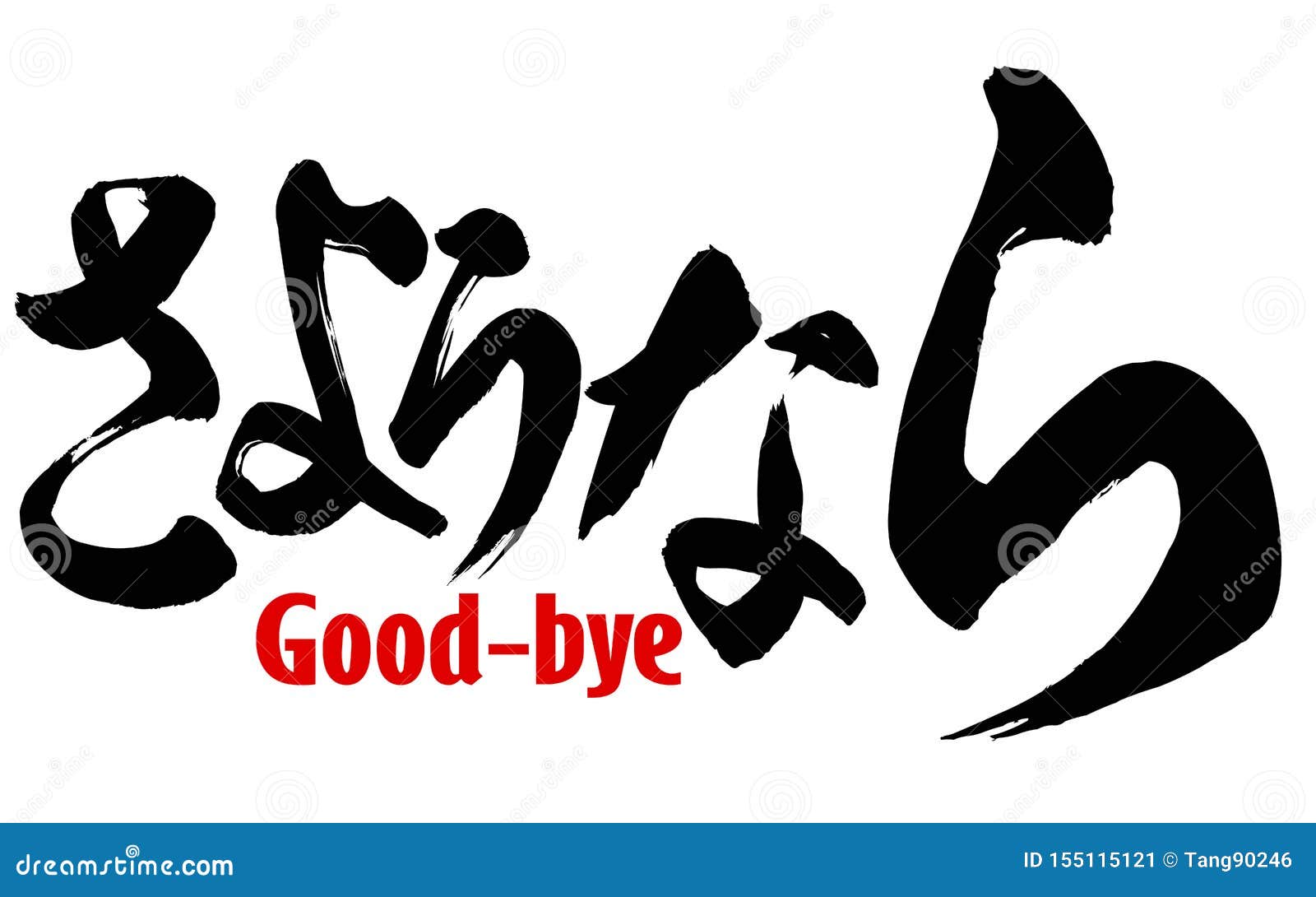Goodbye In Japanese - How People Say Farewell
When you think about saying goodbye in Japanese, one word probably pops into your head first: "sayonara." Yet, you know, that word, while widely known, isn't really what people use for everyday partings. It's almost like a movie scene word, something you hear in a dramatic moment rather than when you're just leaving a friend's house. The actual ways people say goodbye in Japan are quite a bit more varied and, in a way, show a lot about how people connect with each other there.
Figuring out how to say "see you later" or "I'm off" in Japanese can feel a little tricky, so. There are so many options, from really relaxed ways to very polite ones. It all depends on who you are talking to, what you are doing, and if you expect to see them again soon. It's a whole world of little phrases that help you fit right in, honestly.
This whole idea of different goodbyes really shows a core part of Japanese interactions, that. It's about showing respect and knowing your place in a group. Getting a grip on these words and what they mean helps you speak more naturally, and it also lets you feel more comfortable when you are around Japanese speakers, pretty much.
Table of Contents
- What's the Real Story with "Sayonara"?
- How Do Folks Actually Say Goodbye in Japanese Every Day?
- When Do You Need a More Formal Goodbye in Japanese?
- Are There Special Goodbyes for Different Situations?
- What About Common Mix-Ups with Goodbye in Japanese?
What's the Real Story with "Sayonara"?
Many people outside of Japan, and even some who are just starting to pick up the language, think "sayonara" is the go-to word for saying goodbye. You know, it's the one everyone learns first. But, that's not quite how it works in real life, not really. This word, "sayonara," actually holds a deeper sort of meaning, one that suggests a parting that might last a good while, or maybe even a final one. It's not the kind of word you toss around when you're just heading out for lunch and expect to see someone again in an hour or so, pretty much.
"Sayonara" and its Place in Japanese Goodbye
So, when would someone use "sayonara," you might ask? Well, it's often saved for moments when a person is leaving for a long time, perhaps moving away, or if there's a chance they won't meet again for quite a bit, that. Think about a teacher saying goodbye to students at the end of the school year, knowing they might not see them again. Or, if a friend is moving to another country for good, this word might come out. It carries a certain weight, a feeling of something ending, honestly. It's not a light, everyday sort of parting phrase, just a little bit. It's a word that really means "farewell," as in a lasting departure, in a way.
How Do Folks Actually Say Goodbye in Japanese Every Day?
It might come as a surprise, but the most usual, most comfortable way people say "see you" in Japan is something like "ja ne." It sounds a bit like "see ya!" in English, doesn't it? For a language that people often think of as being very proper and rule-bound, this might seem a little too relaxed, so. But if you think about how we say goodbye in English, we often use casual phrases like "bye," "later," or "see you around" with our friends and family, too. Japanese is no different in that respect, you know.
Casual Ways to Say Goodbye in Japanese
There are lots of relaxed ways to say goodbye in Japanese, especially when you are talking to friends, family members, or people you know well, that. "Ja ne" is a big one, as mentioned. Another very common one is "bai bai," which sounds just like "bye-bye" and is often used by younger people or among close pals. Then there's "mata ne," which means something like "see you again," or "see you later." This one is super useful because it implies you will meet again, which is usually the case, pretty much.
You can even get more specific with "mata ne" by adding a time. For example, "mata ashita" means "see you tomorrow," and "mata atode" means "see you later," as in later today. These phrases are all about keeping things light and showing that you expect to meet again soon, which is usually the case, obviously. They make the parting feel less like a big deal and more like a simple pause in your interactions, you know. They are quite natural to use when you are just finishing up a chat or leaving a casual gathering, really.
When you're leaving a place, especially your own home, you might hear or say "itte kimasu." This phrase means something like "I'm going and will come back." The person staying behind would then say "itterasshai," which means "please go and come back." This back-and-forth shows a real care for the person leaving and a wish for their safe return, honestly. It's a sweet exchange that happens every day in homes across Japan, sort of.
When Do You Need a More Formal Goodbye in Japanese?
While casual goodbyes are used a lot, there are definitely times when you need to be more formal. This is especially true in places like a work setting, when you are talking to someone older than you, or someone in a higher position, or even a stranger you've just met, so. Japanese interactions often put a lot of importance on showing respect, and the way you say goodbye is a big part of that, you know. It's about picking the right words to fit the situation and show proper manners, pretty much.
Formal Approaches to Goodbye in Japanese
For more formal situations, you generally won't hear "ja ne" or "bai bai." Instead, people use phrases that show more politeness. If you are leaving work for the day, you might say "otsukaresama deshita" to your coworkers. This phrase is a way of saying "you've worked hard" or "thanks for your efforts," and it serves as a polite way to signal your departure, that. It's not a direct goodbye, but it acts as one in a work setting, essentially.
When you are leaving a place like a shop or a restaurant, the staff will often say "arigato gozaimasu" (thank you very much) or "mata no okoshi o omachi shite orimasu" (we look forward to your next visit). As a customer, you might simply say "arigato gozaimasu" back, or "shitsurei shimasu" if you are excusing yourself from a more formal setting like a meeting, you know. "Shitsurei shimasu" means "please excuse me for being rude" or "I'm about to do something rude," which in this context means leaving, sort of. It's a humble way to take your leave, honestly.
For a general polite goodbye, especially if you are not sure when you will meet again but want to be respectful, sometimes people use "o-genki de." This means "take care" or "stay well." It's a kind and thoughtful way to end a conversation, especially if you won't see the person for a while, too. It shows you care about their well-being, which is a big part of how people interact in Japan, really.
Are There Special Goodbyes for Different Situations?
Yes, absolutely! The way you say goodbye in Japanese can change a lot depending on the specific event or who you are talking to, so. It's not just about how close you are to someone, but also about what you are doing and what the general feeling of the situation is, that. For instance, saying goodbye after a quick chat at the store is very different from saying goodbye after a big work event or when someone is going on a trip, pretty much.
Context-Specific Goodbye in Japanese
Think about someone going on a trip. You wouldn't just say "ja ne," you know. Instead, you might say "ki o tsukete," which means "take care" or "be careful." This is a kind wish for their safety on their travels. If someone is heading to bed, you would say "oyasumi nasai," which is the polite way to say "good night." For close friends or family, you might just say "oyasumi," which is the more relaxed version, honestly.
When you are leaving a gathering, like a party or a casual get-together, you might hear "mata ne" or "ja ne." But if you are leaving a formal event, or a place where you've been working or helping out, you'd lean towards phrases like "shitsurei shimasu" or "otsukaresama deshita," as mentioned before, too. These phrases fit the setting and show that you understand the proper way to exit, sort of.
Even body language plays a role with goodbye in Japanese. A slight bow often goes with a more formal goodbye, while a simple wave might be fine with a casual one, that. It's all part of the bigger picture of how people communicate respect and connection in Japan. Paying attention to these little things helps you fit in and show that you are trying to understand their ways, you know.
What About Common Mix-Ups with Goodbye in Japanese?
It's easy to get confused when you are learning how to say goodbye in Japanese, so. Many people, especially those who learn from textbooks or popular culture, might think "sayonara" is used all the time, but as we've talked about, that's a big misunderstanding. Using "sayonara" when you mean a quick "see you later" can sound really dramatic or even a bit strange to a native speaker, that. It's like saying "farewell forever" when you just mean "bye for now," basically.
Avoiding Missteps with Goodbye in Japanese
One common mix-up is using "sayonara" in casual, everyday settings. If you say "sayonara" to your Japanese friend when you are just leaving their house for the evening, it might make them wonder if you are moving away or if something serious is happening, you know. It carries a heavy feeling, and they might be a little taken aback. Instead, a simple "ja ne" or "mata ne" would be much more fitting and comfortable for everyone, honestly.
Another point of confusion can be with "saraba." This word for goodbye is even more old-fashioned and dramatic than "sayonara." It's almost never used in regular conversation today, really. You might hear it in old movies or books, but it's not something you'd use with a friend or coworker. If you are trying to say goodbye to a friend who is heading back to Japan for a visit, for instance, "sayonara" would still be quite strong, and "saraba" would be completely out of place, sort of. Something like "ki o tsukete" (take care) or "genki de ne" (stay well) would be much more natural and kind, too.
Remember that the way people say goodbye in Japanese is very much about the social setting and the connection you have with the other person, that. It's not just about picking a word from a list. It's about feeling out the situation and choosing a phrase that shows the right level of closeness and respect. Getting a handle on these different goodbyes really helps you speak more like a local and feel more at ease in Japanese interactions, pretty much.

A Comprehensive Guide to Saying Goodbye in Japanese

Goodbye In Japanese

Goodbye In Japanese